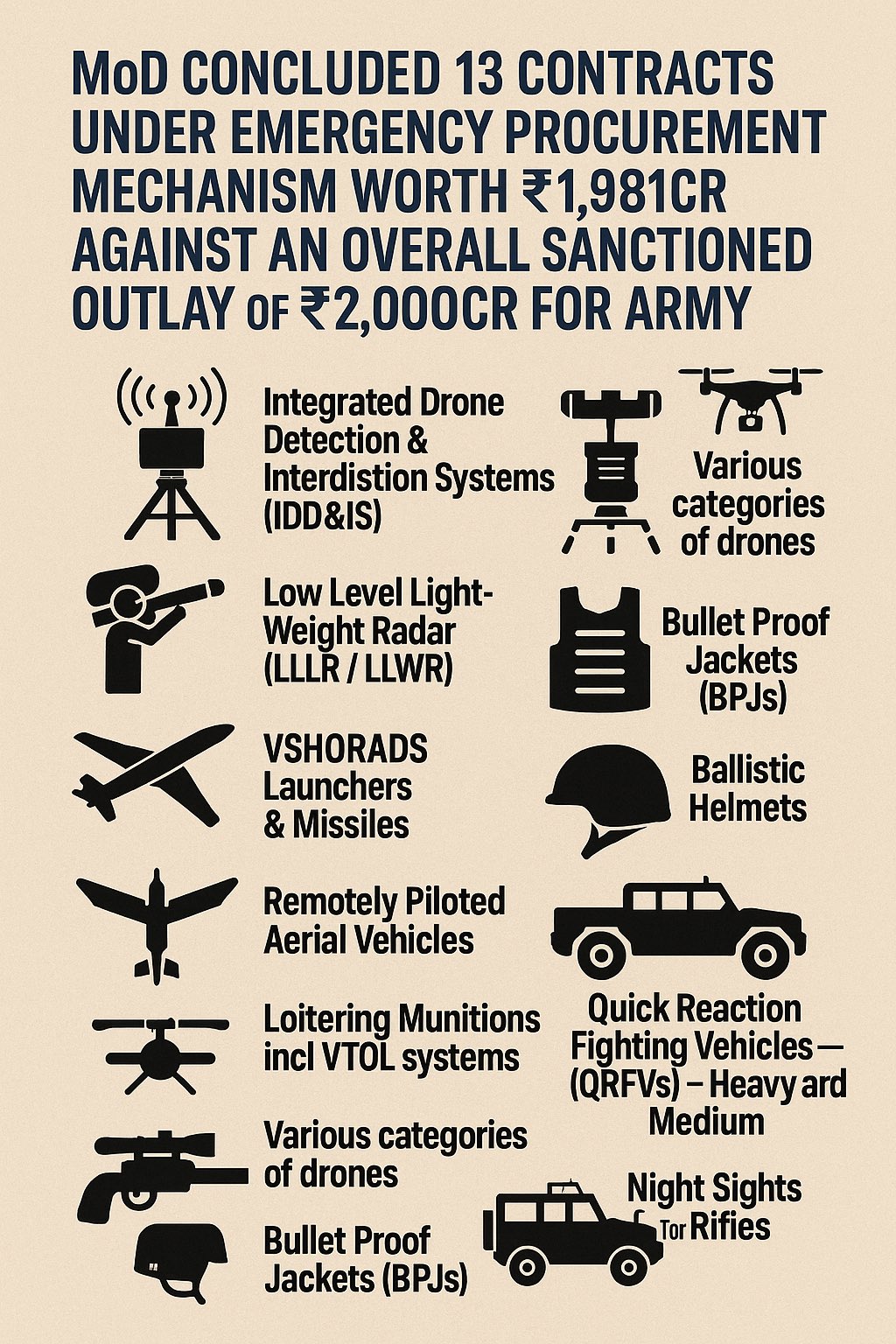Context:
Recently, the Ministry of Defence signed 13 contracts worth ₹1,981.90 crore aimed at rapidly inducting critical equipment. These acquisitions follow Operation Sindoor, in which India targeted terror infrastructure across the border in Pakistan. The operation led to three days of retaliatory strikes by both countries before a ceasefire was reached, highlighting the urgent need for swift capability augmentation.
What Is the Emergency Procurement Mechanism?
- The EP mechanism allows the Armed Forces to bypass the usually lengthy procurement procedures and acquire mission-critical systems on a fast-track basis. This is the sixth phase of such procurements. Unlike conventional capital and revenue procurement processes, EP contracts are concluded within compressed timelines to ensure immediate operational readiness.
- Emergency procurement powers were first granted after the 2016 surgical strikes and were invoked again following the 2019 Balakot airstrikes. They gained further prominence during the 2020 Ladakh standoff with China, leading to repeated extensions to cover evolving security challenges along the Line of Actual Control (LAC).
Key Equipment Being Procured:
According to the Defence Ministry, the contracts cover a wide range of modern systems and protective gear:
- Integrated Drone Detection and Interdiction Systems (IDDIS) for counter-drone operations
- Very Short Range Air Defence Systems (VSHORADs) including launchers and missiles
- Low Level Lightweight Radars (LLLR) for enhanced surveillance
- Loitering munitions, including Vertical Take-Off and Landing (VTOL) systems
- Bulletproof jackets and ballistic helmets to improve soldier protection
- Quick Reaction Fighting Vehicles (QRFVs) to enhance mobility
- Night sights for rifles to improve combat effectiveness in low-visibility conditions
The ministry highlighted that these acquisitions were finalised against a sanctioned outlay of ₹2,000 crore, with most systems sourced from domestic manufacturers under the government’s self-reliance drive in defence production.
Recent Policy Moves:
Defence Secretary announced that the government had authorised the Army, Navy, and Air Force to spend up to 15% of their capital budgets on emergency procurements. This is intended to replenish operational stocks and bridge capability gaps swiftly.
In the past five years, emergency powers have been used to acquire a wide range of advanced platforms and munitions:
- HAMMER air-to-ground precision-guided weapons for Rafale jets
- Spice bombs for precision strikes
- Man Portable Air Defence Systems (MANPADS) for frontline troops
- Armour-Piercing Fin-Stabilised Discarding Sabot (APFSDS) ammunition for T-72 and T-90 tanks
- Hundreds of UAVs, loitering munitions, swarm drones, and counter-drone systems
These procurements have significantly improved India’s capabilities in surveillance, precision targeting, and mobility.
Conclusion:
The Ministry of Defence has emphasised that the EP route remains a key enabler in ensuring timely induction of modern operational equipment. The approach demonstrates a clear shift towards an agile and responsive procurement framework that aligns with India’s evolving security landscape. By combining indigenous manufacturing with accelerated timelines, India aims to maintain a credible deterrence posture and safeguard national intere







